Have you considered incorporating an extra something into your next tank? Perhaps, aquatic crabs will be the best fit for the tanks because those sea creatures are lovable, have interesting personalities, and overall unique behaviors. Contrary to other invertebrates, aquarium crabs are often excluded as possible companions, yet they can be a good addition to any aquatic tank.
Content Table
However, keeping crabs in a fish tank is not as easy as it seems. But there are always certain standards that must be met for the proper care, including compatibility with other species, the crab pets’ aquarium setup, and diet.
In this article, we’ll delve into the world of keeping crabs in a fish tank, exploring which crab species are suitable for beginners, how to create the ideal tank environment, and how to keep crabs alive with essential care tips to keep your crab thriving.

Crab in a tank
Are Crabs Good Beginner Pets
Crabs can be very colorful and are quite enjoyable to keep but the question of whether they are suitable for first-time aquarium keepers comes down to the species and the amount of time you are willing to invest in a crab. Here’s a breakdown to help decide if they’re a good fit for beginners:
Pros of Keeping Crabs as Pets for Beginners
- Unique and Entertaining Behavior: Unlike some other crustaceans, crabs are lively animals and demonstrate some exciting actions such as climbing and digging, as well as scavenging.
- Low Initial Cost: Crab is used in many dishes and many types of crab are easy to obtain and relatively affordable.
- Small Space Requirements: In fact, most crabs do not require an enormous enclosure where they would swim all over.
- Scavengers: Crabs are also useful in consuming the extra food, and algae that may be found in the tank.
Challenges for Beginners
- Special Tank Setup: Many crabs cannot be kept in basic freshwater aquariums because they need other conditions, such as brackish or salt water as well as land.
- Compatibility Issues: Crabs will be territorial and may display hostility towards other tankmates like fish or other snails so a good choice has to be made.
- Water Quality: They are known to have some fragile features mainly on water quality and therefore require constant monitoring and adjustments on the pH, salinity, and water temperature.
- Escape Artists: A lot of the crab varieties are good climbers and they can jump out from the tanks when these are not properly covered.
- Specific Diet Needs: One of the things that people realize soon enough is that these crabs require a correct diet in terms of algae vegetation, protein, and calcium for their shells.
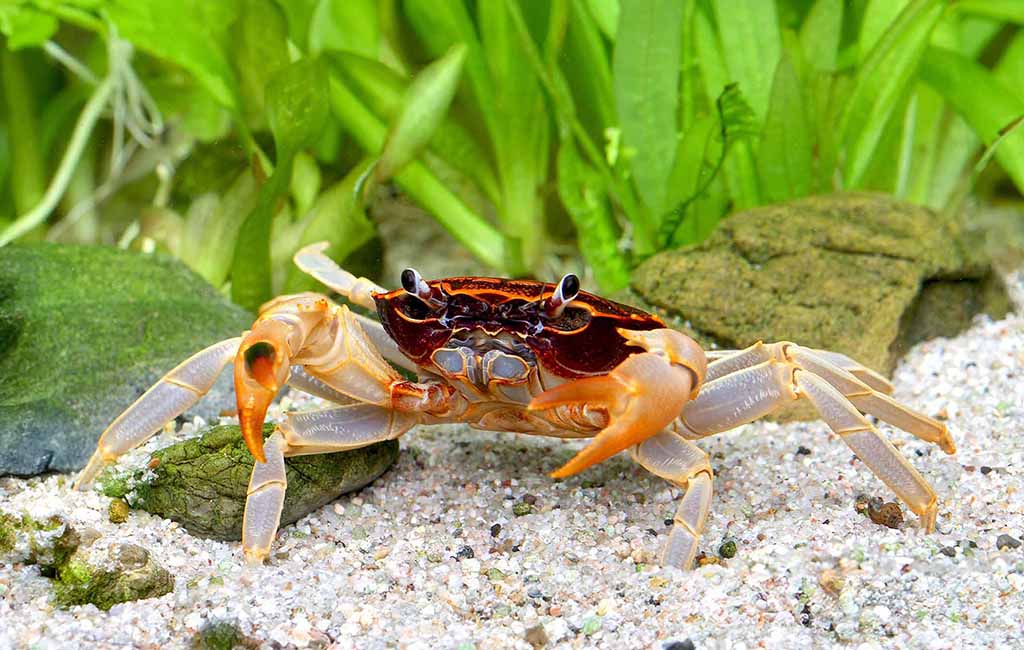
keep crabs in a fish tank
What Kind Of Crabs Can Live In Freshwater Tanks
Even though the name ‘freshwater crab’ may be quite simple to understand there exists a few things that we should consider: All crabs are not water-dwelling. Some of them can only be distinguished as semi-aquatic due to the fact the creatures inhabit both terrestrial and aquatic habitats. When it comes to housing them in a freshwater aquarium, it is pertinent to select only those types of crabs that are strictly aquatic or, at least, those that have particular demands in captivity.
Here are some popular freshwater crab species suitable for aquariums:
Fully Aquatic Crabs
Thai Micro Crabs (False Spider Crabs)
| These small crabs are aquatic and will do best in aquariums with soft fine gravel or sand substrate. They are non-aggressive and can share the tank with other fishes that are of a smaller size. | 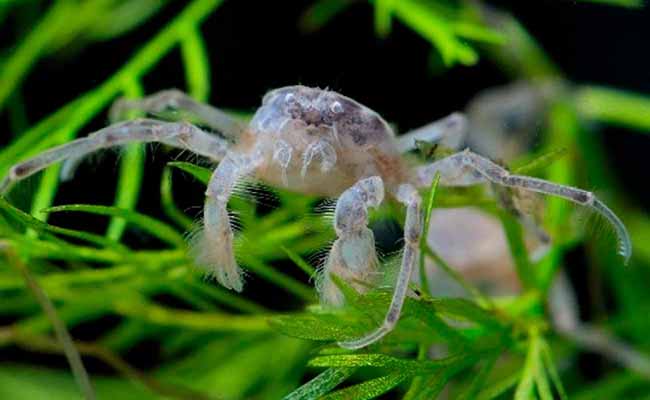 |
Matano Crabs
| These crabs originate from Lake Matano in Sulawesi, Indonesia and its members are obligate dwellers of water, they need certain conditions of water. This species of bird is famous for its bright plumage and rather elusive actions. | 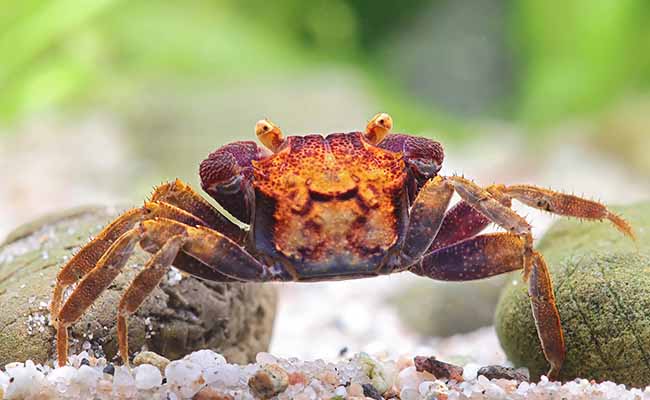 |
Semi-Aquatic Crabs
Red Apple Crabs
| Although largely a land-dwelling species, Red Apple Crabs need a section of water not more than six inches deep for washing and bathing activities. They are not extremely fragile and tolerant of more structural variations and changes. | 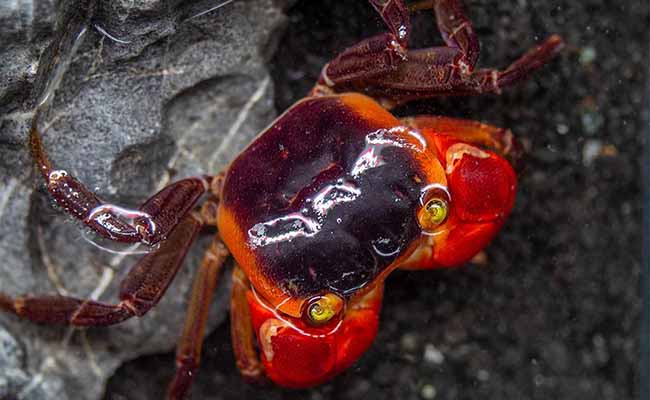 |
Fiddler Crabs
| It also comes with the features that the crabs need in the environment of land and water to survive. These are characterized by the possession of distinct claw-like structures and the digging habit. It’s important to note that, although they are aquatic animals, they need special conditions like terrariums for them to climb and dig. | 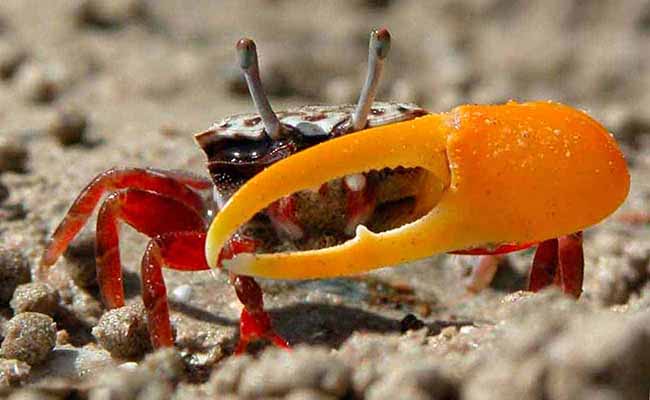 |
Can You Keep An Ocean Crab As A Pet
Considerations for Keeping Ocean Crabs as Pets
- Tank Requirements:
- Saltwater Setup: Ocean crabs need a fully cycled saltwater aquarium with precise salinity levels(specific gravity of 1.020–1.025).
- Tank Size: Larger crabs require spacious tanks to move freely and avoid stress.
- Hiding Spaces: Ocean crabs are often shy and need plenty of hiding spots like rocks, caves, and sand to burrow.
- Water Quality:
- Ocean crabs are sensitive to changes in water parameters. Regular testing for ammonia, nitrites, nitrates, and pH is essential.
- Stable temperature (72–78°F) and filtration are critical to mimic their natural habitat.
- Diet:
- Ocean crabs are scavengers and need a varied diet, including algae, fish, shellfish, and commercial crab pellets. Calcium supplements are also essential for healthy shell growth.
- Aggressive and Territorial Behavior:
- Many ocean crabs can be aggressive and territorial, especially toward tankmates like fish or other crabs.
- Keeping them with other marine life requires careful compatibility checks.
- Longevity and Maintenance:
- Ocean crabs can live for several years with proper care but require ongoing environmental maintenance and attention.

keep a crab in a tank
Keep A Crab In A Fish Tank
Having an ocean crab as a pet in an aquarium is possible, though it implies numerous problems connected with the conditions necessary for their stay and their features. Though hermit crabs and fiddler crabs can be housed, other ocean crabs are a little more challenging to maintain. Here’s what you should know.
Choosing the Right Crab for Your Tank
- Freshwater Crabs:
- Pom Pom Crabs: Peaceful and fully aquatic.
- Thai Micro Crabs: Tiny, shy, and ideal for nano tanks.
- Red Claw Crabs: Require brackish water and some land access.
- Marine Crabs:
- Hermit Crabs: Hardy and common for saltwater tanks.
- Emerald Crabs: Algae eaters and reef-safe.
- Arrow Crabs: Unique appearance but semi-aggressive.
Tank Setup for Crabs
For Freshwater Crabs:
- Tank Size: At least 10 gallons for small species. Larger crabs may require 20 gallons or more.
- Substrate: Use fine sand or gravel for burrowing species.
- Water Conditions:
- pH: 7.0–8.5 (depending on the species).
- Temperature: 72–78°F (22–25°C).
- Add a small amount of aquarium salt for brackish species like Red Claw Crabs.
- Hiding Spaces: Add rocks, driftwood, or PVC pipes to create shelters.
For Marine Crabs:
- Tank Size: Minimum 10 gallons for smaller crabs, but larger marine crabs need more space.
- Substrate: Use live sand to replicate a natural environment.
- Water Conditions:
- Salinity: 1.020–1.025 (specific gravity).
- Temperature: 72–78°F (22–26°C).
- Stable water parameters are crucial for marine crabs.
- Reef Compatibility: Ensure the crab species is reef-safe if you have coral.
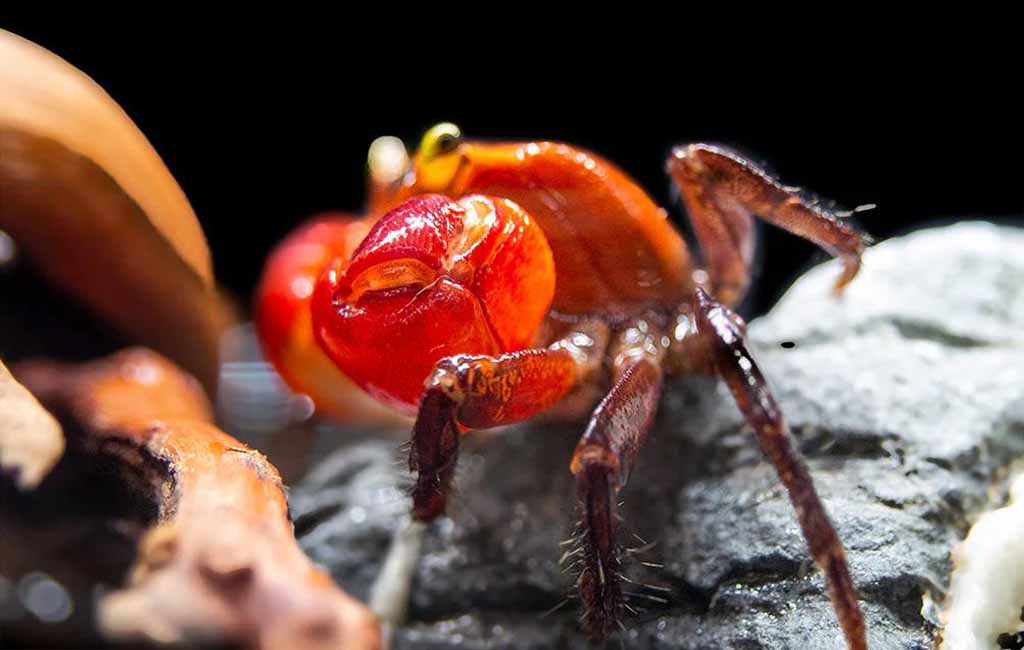
how to keep crabs alive
Compatibility with Tank Mates
- Freshwater Tanks:
- Avoid small fish that crabs can prey on.
- Compatible with snails, shrimp, and peaceful fish (e.g., guppies, mollies) for most species.
- Avoid fin-nipping fish-like tiger barbs.
- Marine Tanks:
- Compatible with hardy reef fish (e.g., clownfish) and other invertebrates like snails.
- Avoid slow or small fish that can become prey.
- Aggressive crabs like Arrow Crabs are best kept alone.
Feeding Your Crab
- Diet:
- Offer a varied diet including sinking pellets, algae wafers, fresh vegetables (e.g., zucchini, spinach), and protein like shrimp or fish.
- Marine crabs may require additional calcium for their shells.
- Feeding Schedule:
- Feed crabs every 1–2 days.
- Remove uneaten food promptly to maintain water quality.
Tank Maintenance
- Water Quality: Test water regularly to ensure stable pH, ammonia, nitrite, and nitrate levels.
- Filtration: Use a gentle filter to avoid strong currents, as crabs prefer calm water.
- Lid Security: Crabs are escape artists! Secure the tank lid to prevent escapes.
Special Care for Semi-Aquatic Crabs
- Some crabs, like Fiddler Crabs or Red Claw Crabs, require access to land.
- Include a sloped substrate or floating platforms.
- Maintain proper humidity for the land area.

Choosing the right crab
Challenges to Consider
- Crab Aggression: Some crabs are territorial and may harm tankmates.
- Escape Risks: Crabs can climb out of tanks through even small openings.
- Molting: Crabs periodically molt their exoskeleton. Provide hiding spaces during this vulnerable phase.
Final Tips
- Research the specific needs of your crab species before adding them to your tank.
- Freshwater tanks are easier for beginners, but marine crabs are manageable with proper preparation.
- Avoid overcrowding and maintain excellent water quality to keep your crab healthy and happy.
5 Freshwater Crabs You Can Keep
Freshwater crabs make unique and fascinating additions to aquariums. Here are five popular species you can keep:
- Pom Crabs: These crabs are entirely amphibious and quite gentle; therefore, suitable for placement in a community aquarium. These fish are adapted to live in clean water and they prefer to dwell in tanks containing water plants and shelters.
- Thai Micro Crabs: Thai Micro Crabs are very very small and nocturnal and are best suited when kept in nano aquariums as well as mini chili crab. They are more found in tanks that have lots of plants and slow water currents.
- Red Claw Crabs: These crabs are amphibious and require brackish water and a piece of land. They are mostly active and excellent for different configurations.
- Panther Crabs: Panther Crabs have bright coloration and are slightly bigger hence need larger tanks. They are docile but sometimes may feed on small fish or eat plants.
- Matano Crabs: These crabs originate from Sulawesi and have bright colors; they are suitable for hardwater tropical tanks.
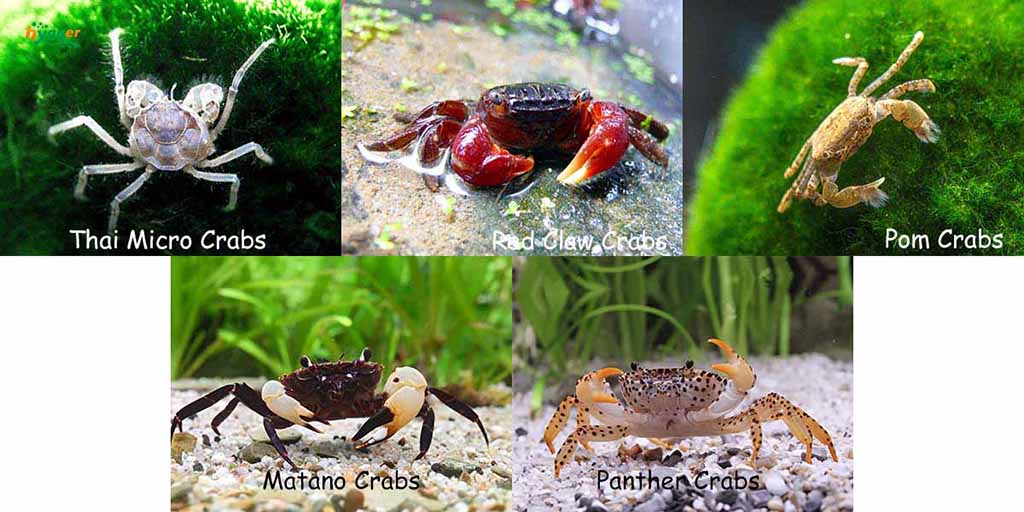
5 Freshwater Crabs
Closing Remarks
Crabs are interesting and enjoyable pets for an aquarium but should be properly cared for and the conditions in an aquarium should be chosen depending on the type of these crustaceans. With the correct selection of the species, quality water conditions, and compatible tank inhabitants, your crustacean friend can provide you with an interesting pet for years.

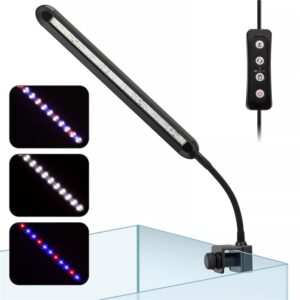
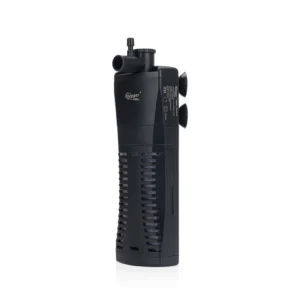
Leave a comment